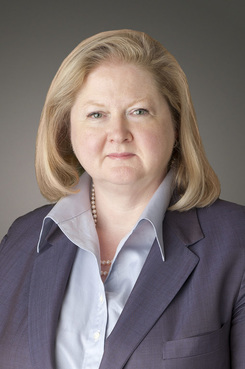Opioid Legislation Takes Steps to Create Treatment Capacity, ID At-Risk Patients
When Congress passed HR 6, the “Substance Use-Disorder Prevention that Promotes Opioid Recovery and Treatment for Patients and Communities Act” (also known as SUPPORT for Patients and Communities Act) as its response to the opioid epidemic, it included provisions to expand capacity in Medicare and includes preventative measures for a population that is vulnerable to opioid-use disorder.
October 25, 2018 at 11:41 AM
5 minute read
 Stephanie Kennan, McGuireWoods Consulting
Stephanie Kennan, McGuireWoods Consulting
When Congress passed HR 6, the “Substance Use-Disorder Prevention that Promotes Opioid Recovery and Treatment for Patients and Communities Act” (also known as SUPPORT for Patients and Communities Act) as its response to the opioid epidemic, it included provisions to expand capacity in Medicare and includes preventative measures for a population that is vulnerable to opioid-use disorder.
An analysis of Medicare Part D data by the Health and Human Services (HHS) Office of the Inspector General revealed that more than 500,000 Medicare Part D beneficiaries received high amounts of opioids in 2016, with the dose far exceeding the manufacturer's recommended amount. Beyond the treatment of addiction, opioid use can also pose health risks such as breathing complications, confusion, drug interaction problems and increased falls, which can—in itself—pose significant health problems for elderly patients. In 2014, the Agency for Healthcare Research and Quality published a report demonstrating that elderly females had a higher rate of opioid-related inpatient stays than elderly males and the rate of opioid-related inpatient stays was highest among those age 65 and older in 13 states. The report highlighted a need to expand capacity for treatment and increase ways to identify at-risk Medicare patients.
Inclusion of Opioid Treatment Programs
To expand capacity, the legislation expands Medicare coverage to include Opioid treatment programs (OTP) for the purposes of medication assisted treatment. Opioid treatment programs were not previously recognized as Medicare providers, forcing beneficiaries to pay out-of-pocket for their services. This provision allows Medicare to pay the outpatient OTP through bundled payments made for holistic services including medications, counselling and testing.
Elimination of Site Requirements
Of significant importance to expand capacity, as well as advance the use of telehealth services, is a provision that expands Medicare's coverage of telehealth services specifically for the treatment of opioid use disorder and other substance use disorders (SUD). This provision eliminates certain statutory originating site requirements for telehealth services provided to a Medicare beneficiary for the treatment of SUD and co-occurring mental health disorders. Beginning July 1, 2019, the provision allows for payment of those services provided at sites regardless of geographic location, including a beneficiary's home. A separate facility fee would not be provided if the originating site is the beneficiary's home. A stumbling block to the expanded use of telehealth in Medicare has been the statutory originating site requirements. While not eliminated for all telehealth services, this provision is notable for changing those requirements for SUD treatment.
Comprehensive Screenings
Another significant provision addresses opioid misuse in the elderly population by allowing for comprehensive screenings for Medicare beneficiaries for opioid use disorder and other substance disorders. The screenings will be included in the initial preventive physical examination (the “Welcome to Medicare” visit) and annual wellness visits thereafter. The physician may include a review of the beneficiary's current opioid prescriptions and screen for potential substance abuse disorders. The comprehensive screening is an important tool to assess patients and allows the physician to create care plans to both address pain and ensure a patient receives appropriate treatment for substance use disorder. However, in order to receive the comprehensive screening patients must opt-in, which may result in patients who need help to not receive the screening.
Opioid Dose Ceiling
Other provisions addressing the Medicare program and the opioid epidemic build upon the Center for Medicare and Medicaid Services (CMS) efforts that began April 10, 2018, when CMS finalized the 2019 Medicare Part D prescription drug program requirements and included a ceiling for opioid doses. Any prescription at or above the 90mg morphine equivalent units would trigger a “hard safety edit” requiring the pharmacist to talk with the prescribing doctor about the dose. CMS also adopted a new policy that requires all new opioid prescriptions for short-term acute pain to be limited to no more than seven days' supply. Several states have already adopted similar measures.
Drug Management Programs
H.R. 6 accelerates the development and use of drug management programs for at-risk beneficiaries by mandating that all prescription drug plans use such a program by 2022. The legislation also requires CMS to identify beneficiaries enrolled in Medicare Part D with a history of opioid-related overdose and include them in the definition of beneficiaries potentially at-risk for prescription drug abuse under the Part D drug management program.
Given the vulnerability of the elderly population, it was important to address both capacity for treatment and the identification of at-risk Medicare patients in the SUPPORT for Patients and Communities Act. The legislation takes important steps toward addressing opioid and other substance abuse disorders in the Medicare program. Implementation of these provisions will determine if they are effective and if additional measures will be needed in the future.
Stephanie Kennan is a senior vice president with McGuireWoods Consulting where she spearheads health care policy services for clients of McGuireWoods Consulting and McGuireWoods LLP.
This content has been archived. It is available through our partners, LexisNexis® and Bloomberg Law.
To view this content, please continue to their sites.
Not a Lexis Subscriber?
Subscribe Now
Not a Bloomberg Law Subscriber?
Subscribe Now
NOT FOR REPRINT
© 2025 ALM Global, LLC, All Rights Reserved. Request academic re-use from www.copyright.com. All other uses, submit a request to [email protected]. For more information visit Asset & Logo Licensing.
You Might Like
View All
No Pa. Case Has Ever Adjudicated a Claim to Enforce an Environmental Covenant Imposed Under 'Act 2'—Does That Matter?
7 minute read
Superior Court Rejects Pa. Hospital's Challenge to $7.3M Med Mal Judgment
3 minute read
Pittsburgh Judge Rules Loan Company's Online Arbitration Agreement Unenforceable
3 minute read
De-Mystifying the Ethics of the Attorney Transition Process, Part 1
Trending Stories
- 1DOJ Files Antitrust Suit to Block Amex GBT's Acquisition of Competitor
- 2K&L Gates Sheds Space, but Will Stay in Flagship Pittsburgh Office After Lease Renewal
- 3US Soccer Monopoly Trial Set to Kick Off in Brooklyn Federal Court
- 4NY AG James Targets Crypto Fraud Which Allegedly Ensnared Victims With Fake Jobs
- 5The 'Motherhood Advantage' in Law: Time to Flip the Script
Who Got The Work
Michael G. Bongiorno, Andrew Scott Dulberg and Elizabeth E. Driscoll from Wilmer Cutler Pickering Hale and Dorr have stepped in to represent Symbotic Inc., an A.I.-enabled technology platform that focuses on increasing supply chain efficiency, and other defendants in a pending shareholder derivative lawsuit. The case, filed Oct. 2 in Massachusetts District Court by the Brown Law Firm on behalf of Stephen Austen, accuses certain officers and directors of misleading investors in regard to Symbotic's potential for margin growth by failing to disclose that the company was not equipped to timely deploy its systems or manage expenses through project delays. The case, assigned to U.S. District Judge Nathaniel M. Gorton, is 1:24-cv-12522, Austen v. Cohen et al.
Who Got The Work
Edmund Polubinski and Marie Killmond of Davis Polk & Wardwell have entered appearances for data platform software development company MongoDB and other defendants in a pending shareholder derivative lawsuit. The action, filed Oct. 7 in New York Southern District Court by the Brown Law Firm, accuses the company's directors and/or officers of falsely expressing confidence in the company’s restructuring of its sales incentive plan and downplaying the severity of decreases in its upfront commitments. The case is 1:24-cv-07594, Roy v. Ittycheria et al.
Who Got The Work
Amy O. Bruchs and Kurt F. Ellison of Michael Best & Friedrich have entered appearances for Epic Systems Corp. in a pending employment discrimination lawsuit. The suit was filed Sept. 7 in Wisconsin Western District Court by Levine Eisberner LLC and Siri & Glimstad on behalf of a project manager who claims that he was wrongfully terminated after applying for a religious exemption to the defendant's COVID-19 vaccine mandate. The case, assigned to U.S. Magistrate Judge Anita Marie Boor, is 3:24-cv-00630, Secker, Nathan v. Epic Systems Corporation.
Who Got The Work
David X. Sullivan, Thomas J. Finn and Gregory A. Hall from McCarter & English have entered appearances for Sunrun Installation Services in a pending civil rights lawsuit. The complaint was filed Sept. 4 in Connecticut District Court by attorney Robert M. Berke on behalf of former employee George Edward Steins, who was arrested and charged with employing an unregistered home improvement salesperson. The complaint alleges that had Sunrun informed the Connecticut Department of Consumer Protection that the plaintiff's employment had ended in 2017 and that he no longer held Sunrun's home improvement contractor license, he would not have been hit with charges, which were dismissed in May 2024. The case, assigned to U.S. District Judge Jeffrey A. Meyer, is 3:24-cv-01423, Steins v. Sunrun, Inc. et al.
Who Got The Work
Greenberg Traurig shareholder Joshua L. Raskin has entered an appearance for boohoo.com UK Ltd. in a pending patent infringement lawsuit. The suit, filed Sept. 3 in Texas Eastern District Court by Rozier Hardt McDonough on behalf of Alto Dynamics, asserts five patents related to an online shopping platform. The case, assigned to U.S. District Judge Rodney Gilstrap, is 2:24-cv-00719, Alto Dynamics, LLC v. boohoo.com UK Limited.
Featured Firms
Law Offices of Gary Martin Hays & Associates, P.C.
(470) 294-1674
Law Offices of Mark E. Salomone
(857) 444-6468
Smith & Hassler
(713) 739-1250





